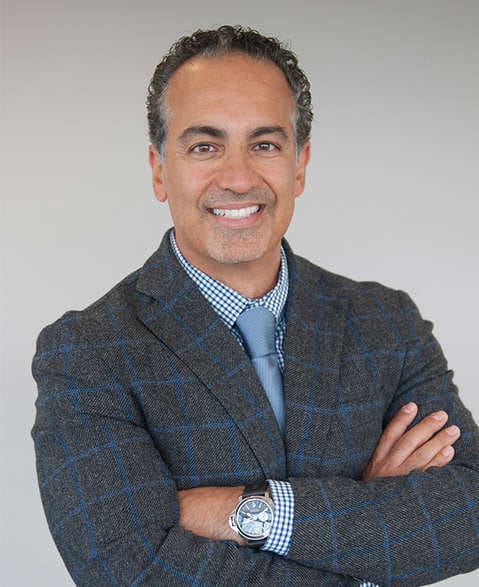
Medically Reviewed by Jonathan Pirnazar, M.D. NVISION Surgeon
Cataracts & Your Golf Game
Last Updated:

Medically Reviewed by Jonathan Pirnazar, M.D. NVISION Surgeon
Cataracts are caused by clumps of proteins forming on the lens of the eye; this makes vision foggy and blurry, obviously affecting golf skills. Without visual accuracy, everything from timing to positioning in your game will suffer.
Cataract surgery is a simple, usually painless procedure. With simple postoperative care, you can be back to an improved and clear game in a couple of weeks.
Table of Contents
Cataracts & Your Golf Game

Cataracts are caused by clumps of inert proteins forming on the lens of the eye. They block light from entering the eye, resulting in vision becoming foggy and blurry.
Cataracts tend to develop as a person grows older, most often occurring in people ages 60 and up. You might notice a yellowish tint in your vision, the result of the protein clumps forming on your central lens. As your lens yellows, you’ll start to experience a slow change in how you see colors and brightness.
You deserve clear vision. We can help.
With 135+ locations and over 2.5 million procedures performed, our board-certified eye surgeons deliver results you can trust.
Your journey to better vision starts here.
You might also lose the ability to make out details in low-light situations, like driving at night or reading small text. You may notice subtle changes in your golf game due to a reduced ability to see clearly.
With age-related cataracts, the loss of vision can occur quite slowly. This makes it difficult for people to recognize the change. In most cases, the visual loss takes place in both eyes at an equal rate, so the changes can be even harder to notice.
If you play golf, you might notice that it’s harder to keep track of the ball in flight, especially if you’re trying to make out the ball against clouds or an overcast sky. Not being able to follow the trajectory of the ball or see where it lands is incredibly frustrating and off-putting for your golf game.
Visual Skills in Golf
You might not think about your eyes very much when you play golf, but visual skills are one of the three primary areas that make up the game of golf. The other two are mental skills and physical skills.
Golf is a visually demanding pastime. Having a good sense of timing affects every aspect of how you play. Everything — from putting, chipping, and driving to reading the greens and gauging distances — comes down to how your brain processes the information your eyes are seeing.
Any golf coach or expert will tell you that what makes a good golf game is the timing. Without visual skills, there is no timing. Without timing, there is no accuracy.
There are many other ways your eyes are key to your golf game.
Binocular vision
Aiming is one thing, but your eyes also have to work together — a function known as binocular vision or eye teaming. This is how you make accurate swings or putts. If one eye is cloudier than the other, your ball will end up too long or too short of its target.
Depth perception
You need to know how hard to hit the ball, and this is where depth perception comes in. Eyes with cataracts cannot judge distance, let alone the many variables on a golf course.
Dominance
Everybody has a dominant eye, preferring to receive visual input from one eye instead of the other. It’s why some people close one eye and focus with their open eye when they try to judge distance. It’s with your dominant eye that you can read the greens, properly position yourself, and even just align your club. These are natural parts of any golfer’s game, but look a little closer and you’ll see how important your eyes are to those processes.
Hand-eye coordination
You need a good swing to make good contact with the ball. You’re not going to be able to do that if you’re trying to make out your grip and positioning through clouded-up eyes.
A Little White Dot

One amateur golfer writing in Myrtle Beach Online explains how his cataracts were causing him difficulty when he drove at night, when he tried to read words on a TV screen, and when he “could barely see a little white dot soar 150 yards.”
He bought prescription eyeglasses, and those helped a little bit. But glasses cannot stop the growth of the inactive proteins on the lens of the eye.
There will come a point when the only recourse for your golf game — and all your other everyday activities — is cataract surgery.
You deserve clear vision. We can help.
With 135+ locations and over 2.5 million procedures performed, our board-certified eye surgeons deliver results you can trust.
Your journey to better vision starts here.
Cataract Surgery
The National Eye Institute explains that cataract surgery is a very simple procedure, where a surgeon removes the cloudy lens from your eye and then inserts an artificial lens, known as an intraocular lens. An intraocular lens does what natural lenses do — provide clear vision — without the risk of the protein clumps growing over it.
There are many different kinds of intraocular lenses, but one of the most common is known as the monofocal lens, which allows people to see at a predetermined range.
When the intraocular lens is put in place, the cornea is closed and left to heal by itself. Because the tissue will naturally reattach, you will not even need stitches. The surgery is so simple that it can be over in as little as 15 minutes, requiring only local anesthesia.
Protecting Your Eyes in Recovery
After cataract surgery is complete, the healing process is straightforward. You will have to use daily eye drops, and you should spend some time every day resting your eyes.
After your cataract surgery, you will likely not be able to hit the links for a couple of weeks. But if you take care of your eyes after your surgery, you will be able to enjoy your golf game without the frustration of cloudy vision.
After you come home following your surgery, you will have to be extremely careful with how you move your body. Any activity that puts pressure on your eyes, like bending over or picking up something heavy, will have to be avoided. Don’t read small text or read in low-light conditions, and try to limit nighttime driving as much as possible.
The flap in your cornea still needs time to heal. Any strenuous activity (physically strenuous or where you are giving your eyes a workout) can likely cause the corneal flap to open.
This means no exercise, including golf, and no overexposure to water, like swimming. You can shower, but protect your eyes by wearing swimming goggles or another form of protection that your doctor approves.
Back to the Game
Talk with your doctor about when you can safely resume playing golf.
Golf requires a lot of visual demand, like precise hand-eye coordination, and you need to wait until your eyes can handle the work.
By taking care of your eyes, you will be doing your golf game — and your score — a favor.
You deserve clear vision. We can help.
With 135+ locations and over 2.5 million procedures performed, our board-certified eye surgeons deliver results you can trust.
Your journey to better vision starts here.
References
- What Are Cataracts? Symptoms, Causes, Diagnosis, Treatment, And Prevention. (September 2020). Everyday Health.
- Age-Related Cataract. (February 2015). The Lancet.
- International Sports Vision Association Launches Dynamic Visual Skills for Sports. Women in Optometry.
- Eye Wear to Improve Your Golf Game. (July 2020). Verywell Health.
- Cataract Surgery. (September 2020). National Eye Institute.
- What Is the Recovery Time After Cataract Surgery? (March 2014). American Academy of Ophthalmology.

Dr. Pirnazar is known as the one of the best LASIK surgeons in Orange County, California. Having performed over 55,000 refractive and cataract surgeries, Dr. Pirnazar’s specialties include LASIK, PRK and cataract surgery. Thanks to his expertise, Dr. Pirnazar and his partners at NVISION were selected to be the official team ophthalmologists for the Los Angeles Chargers.
This content is for informational purposes only. It may have been reviewed by a licensed physician, but is not intended to serve as a substitute for professional medical advice. Always consult your healthcare provider with any health concerns. For more, read our Privacy Policy and Editorial Policy.
